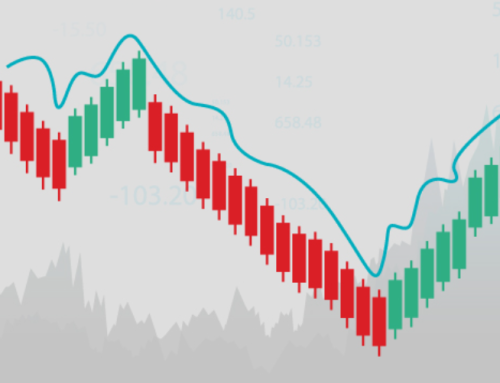Options present a versatile and dynamic way to participate in financial markets, offering traders the ability to speculate on price movements with defined risk. For beginners, the vast array of terms and concepts can be overwhelming, but mastering the basics paves the way for long-term success. From understanding calls and puts to developing personalized approaches, this guide covers essential information to help you navigate options confidently.
The key to thriving in it lies in continuous learning and adapting trading strategies to fit market conditions and personal risk tolerance. By combining fundamental and technical analysis with risk management, traders can craft methods that align with their financial goals. Embracing a disciplined and informed approach significantly enhances your chances of consistent profitability.
Hello! My name is Lucas Chen, and I have been actively working with options for over seven years. Along with my team, we focus on sharing practical knowledge and tested methods tailored for traders starting their journey in options markets. Our combined experience helps us offer valuable insights designed to simplify complex concepts and improve outcomes for beginners.
In this comprehensive guide, you will learn about key concepts, proven strategies, and tools that aid in executing trades effectively. Additionally, we’ll discuss common mistakes to avoid and how to leverage automated tools to enhance your trading efficiency. Whether you’re stepping into binary options for the first time or looking to refine your approach, this guide equips you with foundational knowledge and practical tips.
Understanding Call and Put Options
Call and put are the building blocks of options. A call option gives the trader the right to buy an asset at a specified price within a certain period, while a put option gives the right to sell under similar terms. Grasping how these work is crucial, as they form the basis for all trading strategies. Beginners should familiarize themselves with terms such as strike price, expiry, and premium to understand how trades generate profit or loss.
Binary options operate similarly, but they simplify the process by offering fixed payouts based on whether the asset’s price goes above or below a predetermined level at expiration. Understanding the mechanics of both traditional and binary options trading is essential for successful trading.

Trend Following Strategies
Trend following involves identifying the market’s dominant direction and placing trades that align with this movement. This strategy relies on the premise that trends tend to continue over a certain period, allowing traders to capture sustained price moves. Using trend-following techniques in options trading can enhance the probability of successful trades by entering positions during strong momentum phases. This approach can be applied to day trading and swing trading based on the market’s time frame.
Range Trading Strategies
Range trading is based on the idea that prices often oscillate between support and resistance levels. Traders using this strategy buy options when prices are near support and sell when near resistance, aiming to profit from predictable price swings. This approach suits markets lacking clear directional trends, requiring careful identification of price boundaries and timing for entries and exits. Binary options can also be used in range trading as they allow traders to profit from small price movements within a defined range.
Breakout Strategies
Breakout strategies focus on capitalizing when prices move beyond established support or resistance zones. Traders anticipate that such breakouts signal the start of significant new trends. By trading options around these breakout points, traders aim to benefit from strong price moves and increased volatility. This strategy is effective in markets where swing trading or day trading is common, and it works well with binary options when anticipating short-term volatility.
Using Technical Analysis for Options Strategies
Technical analysis tools are essential for timing options trades by identifying trends, momentum, and reversals. Using indicators like moving averages and oscillators helps traders anticipate price moves and make confident decisions. These tools, when combined with sound risk management, can significantly improve trading accuracy and outcomes. Traders should incorporate best stock trading strategies and trading strategy concepts such as trend identification and entry point analysis to optimize their binary options and options trading.
By mastering technical analysis and integrating it into their trading strategies, traders can create a flexible, well-rounded approach to binary options trading, swing trading, and beyond.
Moving Averages
Moving averages smooth price data to reveal trends. Crossovers signal option entry or exit points, helping filter noise and confirm direction. They also identify support and resistance levels for stop-loss and take-profit orders, making them key tools in trading strategies. Understanding the use of moving averages is essential for determining the best entry points in both call option vs put option strategies.
RSI and MACD Indicators
The Relative Strength Index (RSI) measures momentum and identifies overbought or oversold conditions, helping traders anticipate potential reversals. The Moving Average Convergence Divergence (MACD) indicator highlights changes in trend strength and direction. Combined, RSI and MACD provide robust insights for timing option trades effectively, enhancing strategies for both call option and put option entries.

Fundamental Analysis for Options Trading
Fundamental analysis examines economic, financial, and company-specific factors influencing asset prices. Options traders use this analysis to assess market conditions and anticipate price movements resulting from earnings reports, economic data releases, or geopolitical events. Incorporating fundamentals enhances strategy robustness and complements technical insights, which is vital for understanding call option vs put option and their impact on market prices.
How to Develop a Personalized Options Strategy
Crafting your own strategy involves understanding your risk tolerance, investment goals, and time commitment. Experimenting with different approaches through paper trading or demo accounts helps identify what works best. Regularly reviewing performance and adapting strategies ensures alignment with evolving market conditions and personal objectives. Whether using scalping trading or range trading, fine-tuning your approach is key to success.
Using Automated Tools and Bots
Automated trading tools and bots can assist in executing strategies with precision and speed. They reduce emotional decision-making by following predefined rules and can manage multiple trades simultaneously. However, traders must ensure the reliability of these tools and monitor performance regularly, especially when engaging in fast-paced methods like scalping trading.
Common Mistakes to Avoid in Options Strategies
Beginners often make mistakes such as neglecting risk management, overtrading, or misunderstanding strategy mechanics. Avoid chasing losses or trading without a clear plan. Consistent education, disciplined trading, and prudent capital allocation are key to avoiding common pitfalls and achieving success. This is especially important when using pattern charts or engaging in trading backtesting to refine your strategies.
FAQ
Navigating options trading as a beginner raises many questions, and understanding fundamental concepts is crucial. This FAQ addresses some of the most common concerns to help new traders start confidently and manage their strategies effectively.
What is the best options trading strategy for beginners?
For beginners, trend following and range trading strategies are often recommended due to their clear rules and risk controls. Starting with simple approaches and gradually exploring more complex methods is advisable, such as understanding call put options and when to apply them.
How do I manage risk in options trading?
Effective risk management involves setting strike price targets, using stop-loss orders, diversifying trades, and using only a portion of your capital per trade. Understanding the maximum potential loss before entering a trade helps protect your portfolio.
Can I use multiple strategies simultaneously in options trading?
Yes, combining multiple strategies can diversify risk and adapt to various market conditions. However, it requires careful monitoring and understanding to avoid conflicting trades and ensure coherent execution, especially when using different chart pattern approaches or pattern charts for technical analysis.
Read also about:













Leave A Comment